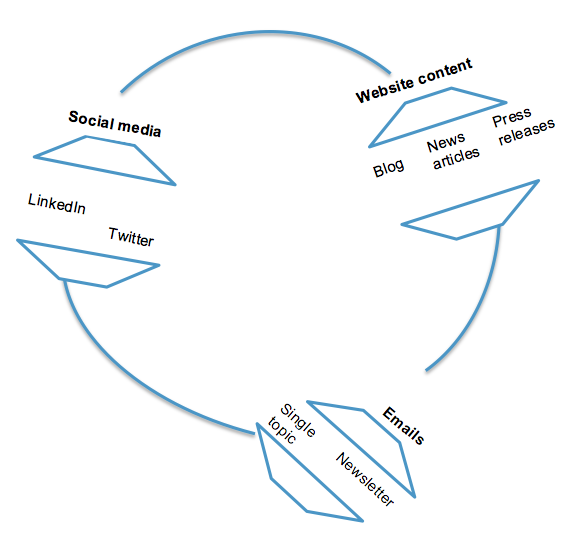Photo credit: Viktoria Haiboniuk
When the North American Bikeshare Association came to Mixte, it simply wanted to earn media coverage. The relatively new membership entity wanted to build its credibility with current members and attract new members through national media exposure. Fast forward three years, the organization has grown from the U.S. into Mexico and Canada and added scooters and other forms of shared micromobility to its bikeshare-based expertise.
As you can imagine, its communications needs evolved in this same period. Our media relations and digital communications team rode alongside its remotely based staff to advance the communications to meet the organization’s developing needs.
How did we do that?
While not the sexiest five steps, we find that foundational communications with newer and evolving organizations puts into place a backbone for more effective and efficient communications that can be measured for progress.
Develop a Content Marketing Flywheel
This understanding of your customer’s journey through the buying process ensures that you’re offering the right message through the right communications channel at the right time. It’s a wheel because it doesn’t matter where your customer finds you (your email that a current member shared with them, through a story in Next City, or from a tweet), but once they are in, they should continue moving around the flywheel until they buy a membership, and then they should continue around the flywheel as an important part of your customer retention.
For NABSA, we have limited resources, including our time, our client’s time and budgets. Its flywheel didn’t need to be complicated; in fact, it was intentionally simplistic so that our emails, blog, twitter, LinkedIn and media relations fed into one another and developed momentum for the organization as a whole.

Create Processes for Clear Communication
Systems make the world go round. Bikeshare systems help people move within a city. NABSA’s best management practice systems help its members learn from previous shared micromobility efforts to shortcut to more effective programs overtime. And communications systems ensure clients, members and consultants know how information will flow, the timeline to send and receive information, and roles and responsibilities along the way.
For NABSA, the systems we developed needed to set manageable and predictable workflow from its internal staff to its external consultants and advisory committees.
Draft Style and Tone of Voice Guidelines to Keep Communications Consistent
Human beings each have our own style. We developed a guidelines document for NABSA that established its trinational business style and tone of voice so that each step in our communications flywheel consistently represents the organization. We also needed to establish the tone and style specific to each medium to help each communications channel reach its intended audience.

Especially with an organization in its infancy, having these guidelines written and easily referenceable means you can establish more consistent communication early on, but it also means that when you have pinch points (is this the right tone?), you have a foundational structure to reference and to adapt as your figure out who you are. It’s also a key tool to aid an executive director in delegating work to volunteers, new staff and consultants.
Try New Things and Evaluate for Lessons Learned
You always have to push the envelope.
We find that getting stuck in your ways only leads to complacency. While it’s comfortable, you don’t learn what’s working and what can work even better. After a few years working with NABSA, we developed relationships with national media, but we wanted to better connect trends happening in markets across the country to make a larger story and be more helpful to media and our members. In this respect, we tried new ways to approach communications by building in member engagement strategies, which looked like a bi-coastal webinar-based press conference including on-the-ground media events in select cities.

While we learned a lot about what didn’t work for coordinating something like this, we also learned more about what is effective, fun and a good use of budgets (time and money) for NABSA.\
Explore Strategic Expansion to the Communications Department
One of the things we see communications departments do poorly is fall prey to the “we have to do it all and right now” mentality.
This is one thing that we have admired about NABSA since the beginning. It’s a time realist.
The team, whether it was staff or board of directors, recognized that the organization didn’t have large resources to do it all, so we had to be strategic in how we used our time and how we brought new channels into the flywheel.
While we started our relationship with NABSA through media relations, we brought on the development of its monthly newsletter. We added twitter because we knew that government and policy folks used that medium to connect at conferences and cloud-based information sharing, and eventually, we launched LinkedIn because – well, it’s a membership organization for businesses and professionals to grow their understanding of shared micromobility. We didn’t do it all at once. We did it strategically with time as our capacity increased, in large part because of the development of the other four steps.






